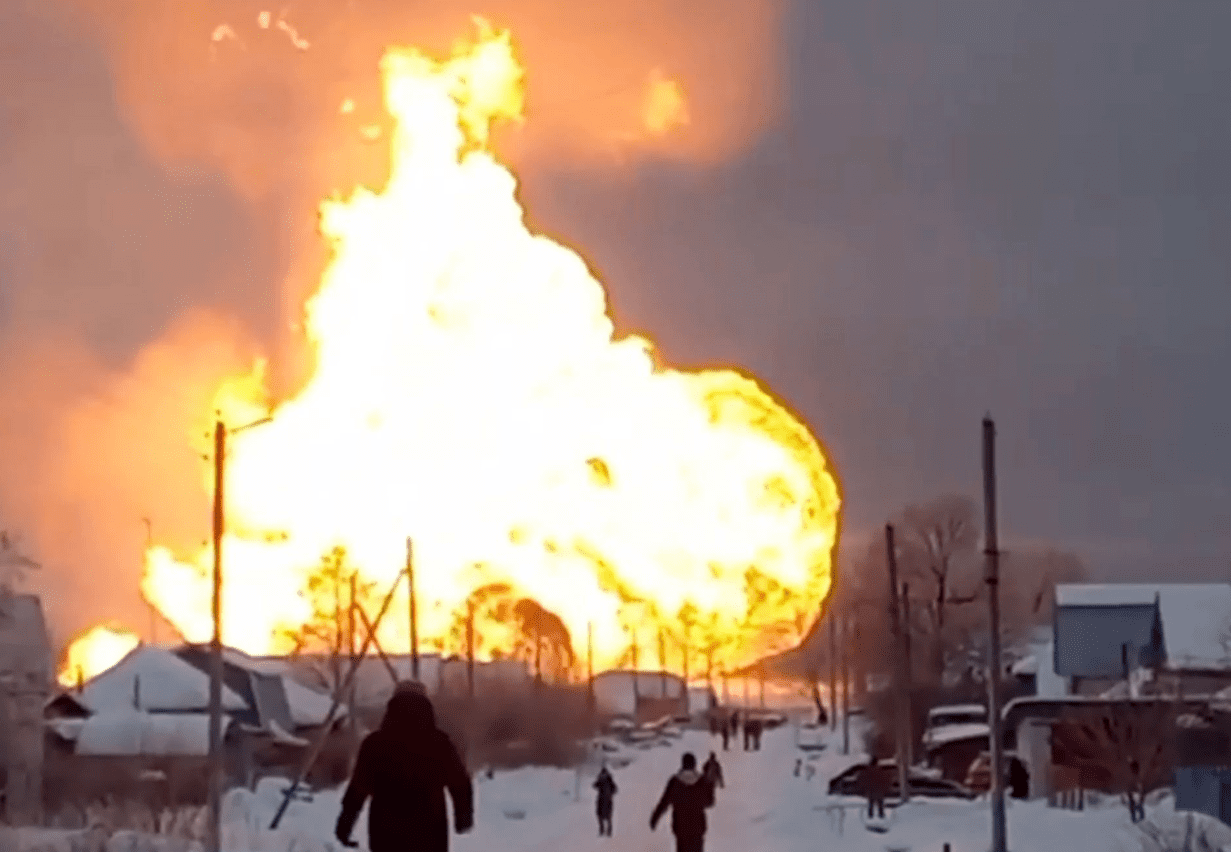Blaze Engulfs Russian Gas Pipeline in Western Siberia
A significant fire has erupted along one of the principal trunklines in a corridor connecting Russia’s gas-rich Yamal-Nenets autonomous region to West Siberia.
These pipelines play a crucial role in transporting the majority of gas extracted by the state-controlled Gazprom from Yamal-Nenets to clients in the European part of Russia, as well as to export destinations via the TurkStream and Blue Stream subsea pipelines in the Black Sea, along with a legacy pipeline across Ukraine.
Eyewitnesses traveling along a temporary winter road in Khanty-Mansiysk reported observing a fire in a remote area on the evening of March 9th, with a substantial fiery burst documented on video.
Local authorities identified the accident site approximately 20 kilometers from the settlement of Lykhma in the Beloyarsky district.
In contrast to prior incidents in the region over the past two decades, authorities this time opted not to specify which of the six pipelines had sustained damage.
The Khanty-Mansiysk regional government stated via a social media post that the fire resulted from a rupture of a gas trunkline.
A regional division of the Russian Emergency Situations Ministry issued a brief statement on March 10th, indicating that a fire occurred after the pipeline’s rupture and was promptly extinguished. No casualties were reported as the incident took place in an uninhabited area.
The incident caused no environmental harm, thereby obviating the need for fire and rescue teams’ intervention. Following the fire’s containment, remedial measures commenced on-site by emergency response teams from a Gazprom-managed gas transportation enterprise.
The network of six parallel gas pipelines in the area falls under the management of Gazprom’s subsidiary, Gazpromtransgaz Yugorsk.
Attempts to reach Gazpromtransgaz Yugorsk for comment were unsuccessful.
In May of the previous year, regional authorities documented a similar mishap on the Yamburg-Yelets-1 pipeline, approximately 30 kilometers from Lykhma, resulting in one casualty. Four workers were hospitalized, one of whom was in critical condition, according to regional authorities at the time.
The other five pipelines within the same corridor are Yamburg-Yelets-2, Urengoy-Tsentr 1 & 2, Progress, and Urengoy-Pomary-Uzhgorod.
Several reports on Russian social platforms have hinted at an explosion heard in the vicinity of the accident site before the onset of the fire. Nonetheless, there has been no independent verification of external interference in this remote locale, spanning over 2300 kilometers from the Russian-Ukrainian border.
Russian authorities disclosed the downing of several unmanned aerial vehicles, purportedly originating from Ukraine, across various regions in the northwestern, central, and southwestern sectors of the country during the early hours of March 10th.
Previously, Russian researchers had recurrently drawn attention to the thawing of ice-rich permafrost along certain sections of the Yamburg-Yelets-1 pipeline—commissioned in 1987—where the transported natural gas maintained an average temperature surpassing the melting point throughout the year. This phenomenon, in turn, raised concerns about buoyancy issues jeopardizing the pipeline’s structural integrity.
Image source: The Sun


